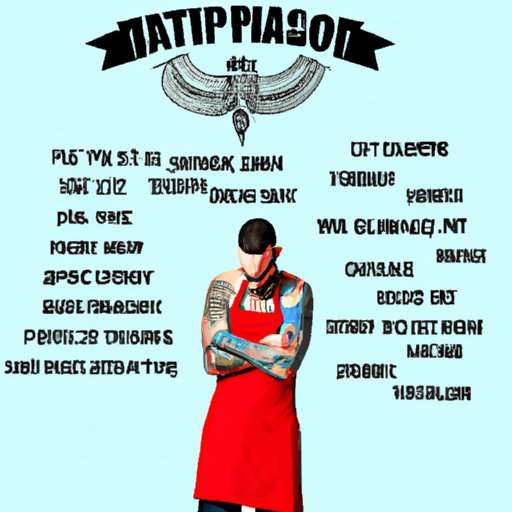Introduction
Tattoos have become increasingly popular in recent years. Once seen as taboo, tattoos are now considered a form of self-expression and body art. While tattoos are becoming more accepted in society, they still come with some stigma. One of the most common concerns people have when considering getting a tattoo is the pain associated with the process. In this article, we explore the pain of getting a tattoo, from finding a qualified artist to pain management techniques.

A Comprehensive Guide to Getting a Tattoo
If you’re thinking about getting a tattoo, it’s important to take the time to research and find a qualified, professional tattoo artist. It’s also important to take the time to design your tattoo. Consider what you want the tattoo to represent and how you want it to look. If you’re unsure, many tattoo artists will work with you to create a custom design.
Once you’ve found an artist and designed your tattoo, it’s time to prepare for the tattoo process. Make sure to get plenty of rest the night before, eat a healthy meal, and drink plenty of water. You should also plan to wear comfortable clothing that allows easy access to the area you’ll be getting tattooed.

Tattoo Pain: What to Expect and How to Prepare
No matter how prepared you are, getting a tattoo is going to be painful. The level of pain varies depending on the individual and the type of tattoo they’re getting. Generally speaking, larger pieces tend to be more painful than smaller ones. The pain also depends on the placement of the tattoo. Areas with thinner skin, such as the wrists, ankles, and ribs, are typically more sensitive than other areas.
It’s important to understand the different types of tattoo pain. There are two main types of pain associated with getting a tattoo: the initial sting of the needle and the dull ache of the healing process. The initial sting of the needle is usually the most intense part of the process. This is when the needle first breaks the skin and the ink is injected. After the initial sting, the pain should subside into a dull ache. This ache will last until the tattoo is healed.

Exploring the Pros and Cons of Tattoos
Before getting a tattoo, it’s important to consider both the benefits and potential risks associated with them. On the plus side, tattoos are a great way to express yourself and commemorate special moments in your life. They can also be a source of pride and boost your self-confidence. However, there are some potential risks associated with tattoos, such as the possibility of infection or allergic reaction to the ink.
It’s also important to keep in mind that tattoos are permanent and may not be suitable for certain professions. Before getting a tattoo, it’s important to do your research and make sure you’re aware of any potential risks or restrictions.
The Different Types of Tattoo Pain
When it comes to tattoo pain, it’s important to understand the different types. Pain is subjective and can vary from person to person. However, there are some common types of pain associated with getting a tattoo. These include burning, stinging, itching, throbbing, and aching. Each person will experience these sensations differently, so it’s important to be aware of your own pain tolerance.
In addition to understanding the different types of pain, it’s important to familiarize yourself with the pain scale. The pain scale ranges from 1 (no pain) to 10 (unbearable pain). Knowing where you fall on the scale can help you prepare for the tattooing process and manage your expectations.
Tattoo Pain Management Techniques
While getting a tattoo is always going to be painful, there are some techniques you can use to manage the pain. One of the most effective methods is taking an over-the-counter pain medication, such as ibuprofen or acetaminophen, prior to the procedure. This can help reduce inflammation and ease the discomfort.
Another option is using numbing creams. These creams are designed to numb the skin and reduce the sensation of pain. However, it’s important to check with your tattoo artist before using any numbing creams as some may interfere with the tattooing process.
Stress management is also key to managing tattoo pain. Taking deep breaths and engaging in relaxation exercises can help you stay calm and focused during the procedure. You can also try listening to music or watching a movie to distract yourself from the pain.
Tattoo Aftercare Tips for a Pain-Free Healing Process
Aftercare is essential for a successful tattoo healing process. It’s important to follow your tattoo artist’s instructions for proper aftercare. This includes cleaning the tattoo site with a mild soap and warm water, dressing the tattoo site with a non-stick bandage, avoiding direct sunlight, and taking care of the tattooed area. By following these simple steps, you can ensure a smooth and pain-free healing process.
Conclusion
Getting a tattoo can be a daunting and painful experience, but with the right preparation and management techniques, it can be much more manageable. Be sure to take the time to find a qualified professional and design your tattoo, as well as practice pain management techniques and follow proper aftercare instructions. With the right preparation, you can make the experience more bearable and come away with a beautiful piece of art that you can cherish for years to come.


